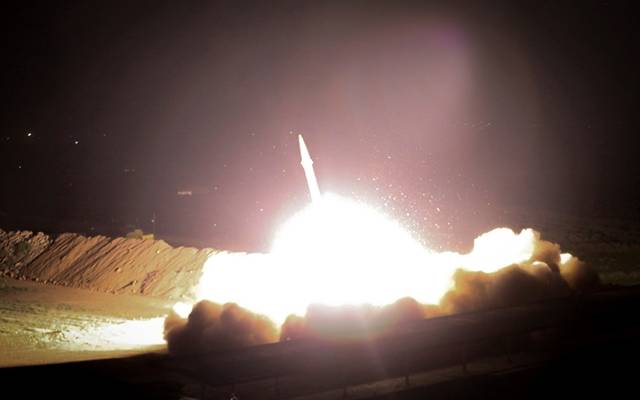“The Saudis and Americans are especially receivers of this message,” said Iranian Gen. Ramazan Sharif after launching missiles at ISIS in Syria.
Iran says its ballistic missile strike targeting the Islamic State (ISIS) terror group in Syria was not only a response to deadly attacks in Tehran, but a powerful threatening message to archrival Saudi Arabia and the US.
The launch, which hit Syria’s eastern city of Deir el-Zour on Sunday night, appeared to be Iran’s first missile attack abroad in over 15 years and its first in the Syrian conflict, in which it has provided crucial support to President Bashar Assad.
Iran’s powerful Revolutionary Guard (IRGC), a paramilitary force in charge of the country’s missile program, said it launched six Zolfaghar ballistic missiles which hit an ISIS command center and suicide car bomb operation.
Israeli sources report that only one of the missiles hit their target.
Syrian opposition activist Omar Abu Laila, who is based in Germany, but closely follows events in his native Deir el-Zour, said two Iranian missiles fell near and inside the eastern town of Mayadeen, an ISIS stronghold. He said there were no casualties from the strikes.
The IRGC described the missile strike as revenge for attacks on Tehran earlier this month that killed at least 18 people and wounded more than 50, the first such ISIS assault in the country.
But the missiles sent a message to more than just the terrorists in Iraq and Syria, Gen. Ramazan Sharif of the IRGC told state television.
“The Saudis and Americans are especially receivers of this message,” he said. “Obviously and clearly, some reactionary countries of the region, especially Saudi Arabia, had announced that they are trying to bring insecurity into Iran.”
Iran Capable of Hitting US Bases in the Gulf
The Zolfaghar missile, unveiled in September 2016, was described at the time as carrying a cluster warhead and being able to strike as far as 700 kilometers (435 miles) away.
That puts the missile in range of the forward headquarters of the US military’s Central Command in Qatar, American bases in the United Arab Emirates (UAE) and the US Navy’s 5th Fleet in Bahrain.
The missile also could strike Riyadh, the capital of Saudi Arabia.
While Iran has other ballistic missiles it says can reach longer distances, Sunday’s strike appears to be the furthest carried out abroad. Iran’s last foreign missile strike is believed to have been carried out in April 2001, targeting an exiled Iranian group in Iraq.
Iran has described the Tehran attackers as being “long affiliated with the Wahhabi,” an ultraconservative form of Sunni Islam practiced in Saudi Arabia. However, it stopped short of directly blaming the kingdom for the attack, though many in the country have expressed suspicion that Iran’s regional rival had a hand in the assault.
Israel is also concerned about Iran’s missile launches and has deployed a multi-layered missile-defense system. When Iran unveiled the Zolfaghar in 2016, it bore a banner printed with a 2013 quote by Khamenei saying that Iran will annihilate the Israeli cities of Tel Aviv and Haifa should Israel attack Iran.
Israeli security officials said Monday they were studying the missile strike to see what they could learn about its accuracy and capabilities.
“We are following their actions. And we are also following their words,” Prime Minister Benjamin Netanyahu said. “And I have one message to Iran: Do not threaten Israel.”
Iranian officials meanwhile offered a series of threats of more strikes, including former Guard chief Gen. Mohsen Rezai. He wrote on Twitter: “The bigger slap is yet to come.”
By: AP and United with Israel Staff
